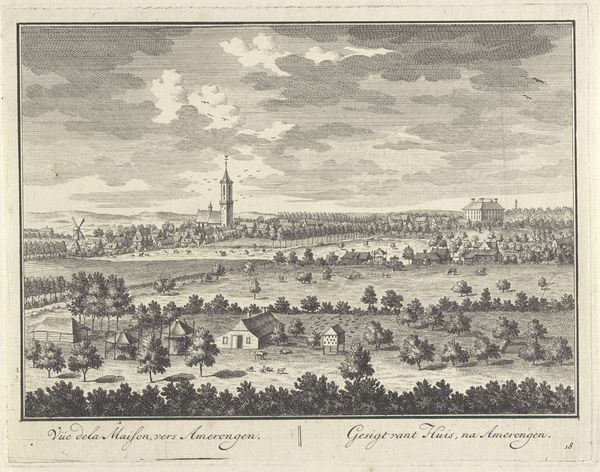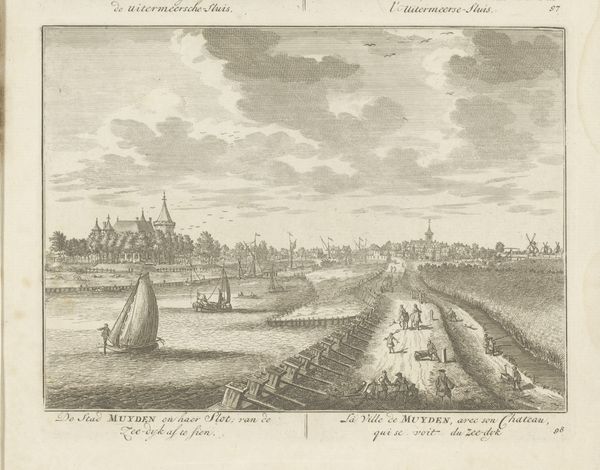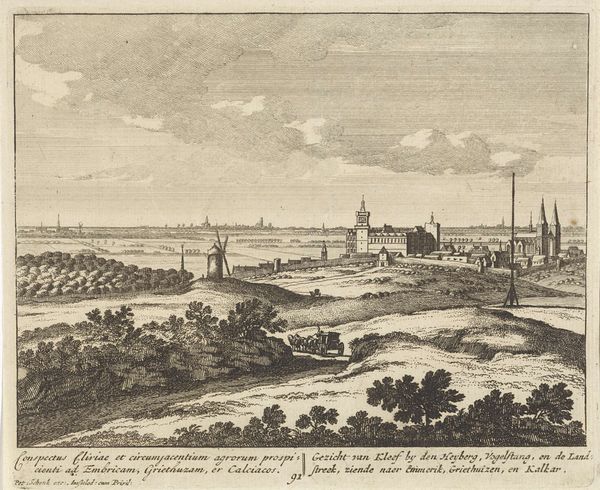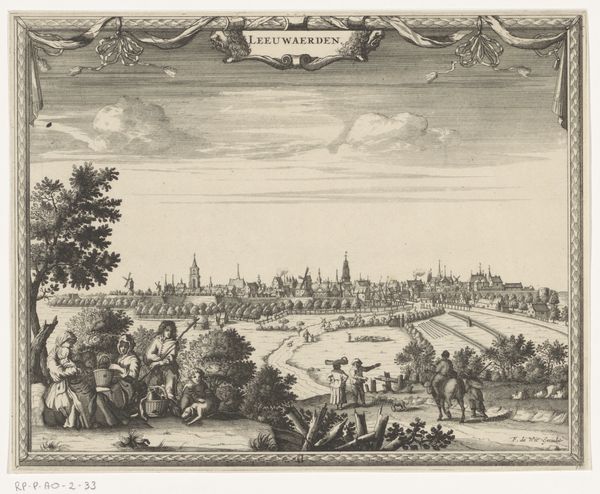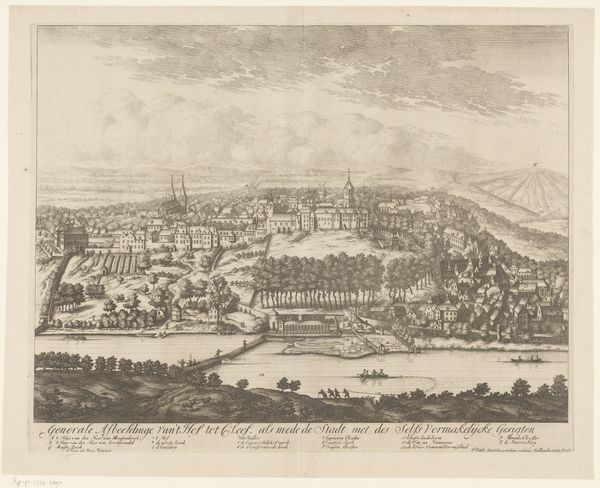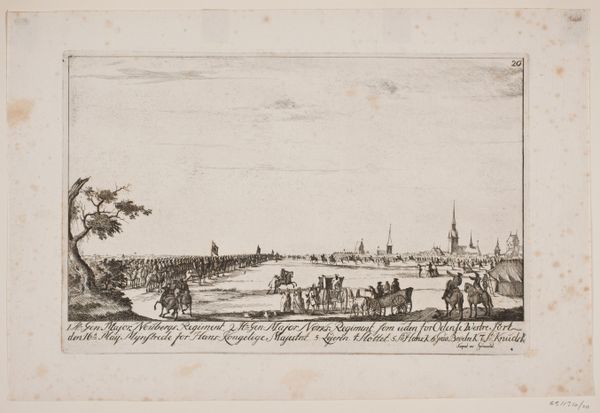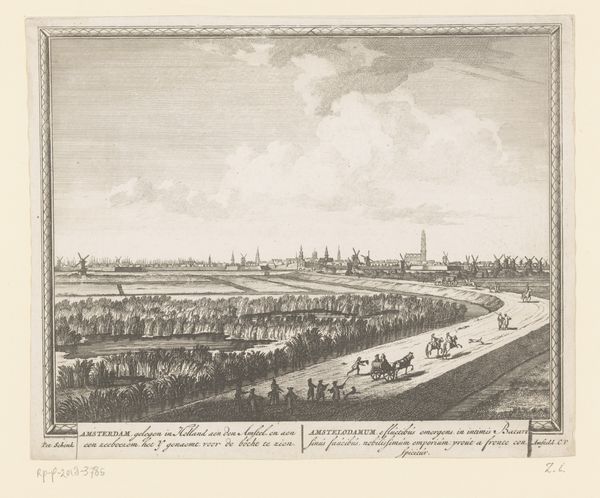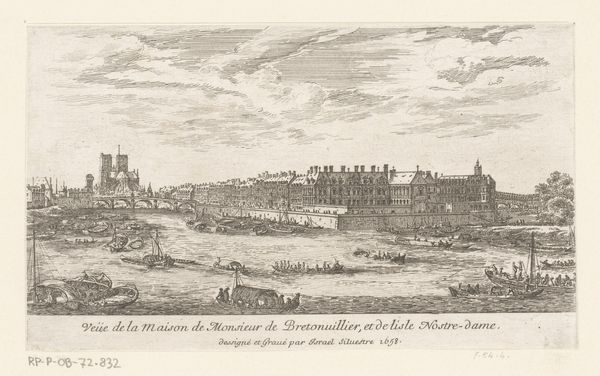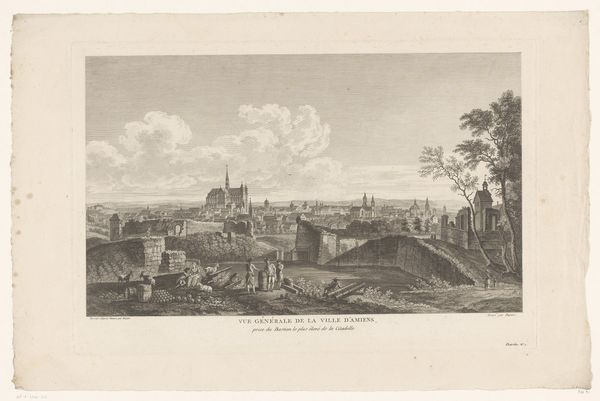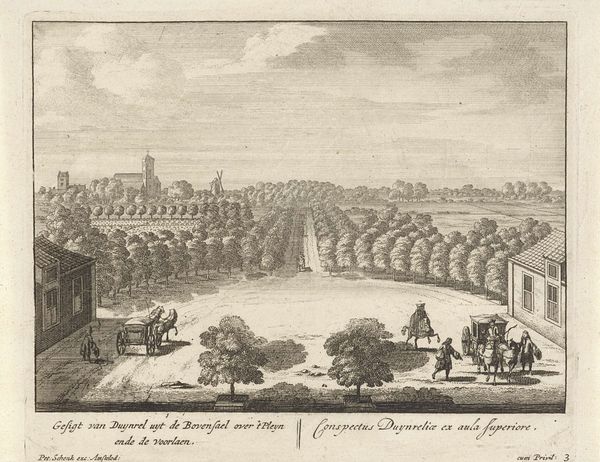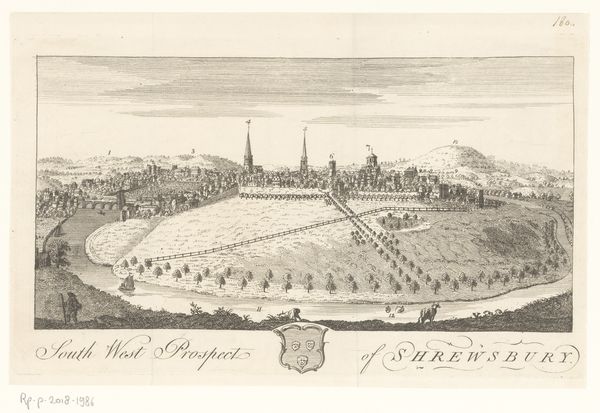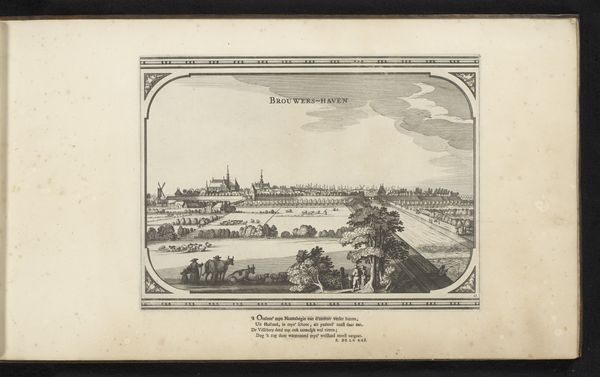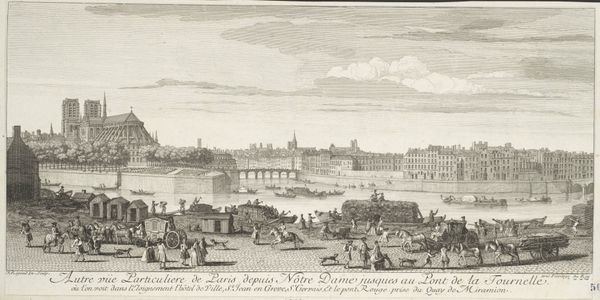
Dimensions: height 160 mm, width 204 mm
Copyright: Rijks Museum: Open Domain
Curator: This serene cityscape is “Gezicht op Utrecht nabij de Leidse Rijn,” or “View of Utrecht near the Leidse Rijn,” an etching and engraving by Daniël Stopendaal from around 1790. What's your first impression? Editor: It strikes me as incredibly balanced. The composition leads my eye smoothly from the foreground details, the farmers and grazing sheep, to the detailed cityscape on the horizon and the sky above. It feels very classical. Curator: Yes, there’s definitely a sense of order and control. Stopendaal offers a particular view of urban space here, mediating the city through the lens of agriculture and rural labor. Note how he inscribes the skyline, a pictorial shorthand to designate each building for its respective church, to call it into a civic totality. It's an assertion of bourgeois authority over the landscape. Editor: Exactly. See how the sharp lines of the architecture contrast with the softer, almost idealized curves of the figures in the foreground? Stopendaal juxtaposes man with his own artificial construction. Curator: That artificial construction being a space of religious and governmental authority in 18th century Dutch society, which Stopendaal subtly implies with the various church steeples represented in line. The image, which shows both Dutch and Latin textual descriptions of the space, emphasizes Utrecht’s position as an intersection of civic importance. Editor: I’m also drawn to the use of light and shadow. It creates depth but in a highly structured way, not chaotic, and in turn guides you into a visual conversation that shows great perspectival rigor. You’ll notice how different sets of shading are applied to the rows of cultivated shrubbery, differentiating the grounds while also giving us insight into how to scan the image overall. Curator: Absolutely. Stopendaal's precise draftsmanship mirrors the Enlightenment's emphasis on rationality and empirical observation, but this print was likely disseminated widely, not just to those educated in these schools of thought. This view of Utrecht, reproduced and distributed, served to define a sense of place, a collective identity. Editor: For me, this meticulous rendering reflects the period's intense interest in representing the physical world with ever-increasing precision—almost as a way to capture and classify reality itself. Curator: Perhaps these landscapes offer their 18th-century audiences an emergent vision of the public, both its possibilities and power. Editor: What a captivating convergence of art and context. Curator: It certainly highlights the intricate layers that constitute even seemingly simple landscape prints.
Comments
No comments
Be the first to comment and join the conversation on the ultimate creative platform.
